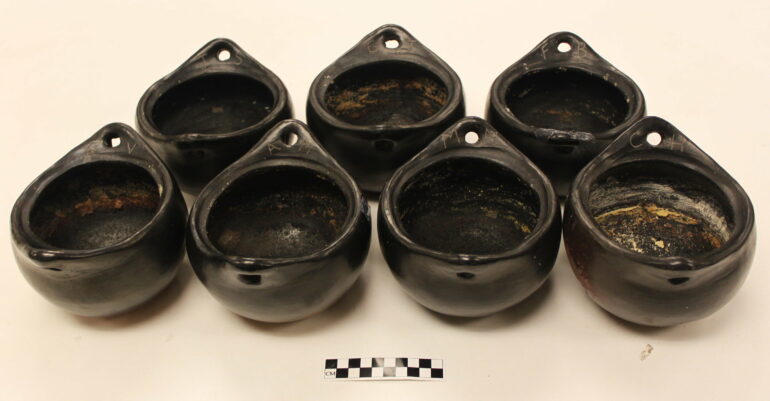Archaeologists have combined DNA analysis with the study of pottery to examine the spread of broomcorn millet across Eurasia, revealing how regional culinary traditions persisted even as new crops were introduced.
Broomcorn millet was domesticated in China and was cooked through boiling and steaming, producing a wet and sticky end product.
In Central Asia, however, grains were typically ground and baked into bread. When millet was introduced, people simply applied their pre-existing cooking techniques to the new grain.
“It was already known that staple crops had moved long distances across the Old World in prehistory, at the same time that regional cuisines had persisted in a conservative fashion,” states author Dr. Hongen Jiang from The University of the Chinese Academy of Sciences. “We didn’t know how those two opposing trends interconnected.”
To tackle this, a team of researchers from several Chinese, U.K. and U.S. institutions analyzed the DNA of preserved millet remains from 1700 BC–AD 700 Xinjiang in north-west China and compared them with cooking vessels to reconstruct prehistoric cooking methods. Their results are published in the journal Antiquity.
“Just as remarkable as the vast journeys staple crops made across prehistoric Eurasia is the enduring persistence of the regional culinary cultures that received those crops,” says Dr. Jiang. “Conventional studies of ancient pottery can be combined with novel DNA science to reveal how they interconnect.”
The stickiness of broomcorn millet is controlled by certain gene variations. By analyzing the DNA of grain samples, Drs. Harriet Hunt and Diane Lister from Kew Gardens and Cambridge University were able to determine that none of the millet grains from Xinjiang had the genes to make them sticky.
This suggests that, as millet moved west, it retained a non-sticky consistency, despite the fact that sticky millet was already widely distributed in eastern China. This means that crops spread further west than the culinary traditions with which they were associated.

Xiaohe cemetery, Xinjiang, exposed timbers indicating the outstanding organic preservation on these sites. © Hongen Jiang for the Xinjiang Institute of Archaeology and Cultural Relics
This is also supported by ceramic evidence. While eastern Chinese ceramic vessels have a tripod base to facilitate boiling, those in Central Asia have rounded bottoms, a design originating in the Altai mountains.
Importantly, this means that while millet was introduced to Xinjiang from the east, the vessels used to cook it came from the north. This further indicates that cooking traditions survived the introduction of new ingredients.
The western spread of staple crops fundamentally changed the diets of those it reached, but culturally ingrained cooking traditions likely remained the same. Dr. Xinyi Liu from Washington University in St. Louis draws attention to a corresponding pattern in the reverse. Wheat traveled eastward to ancient China about 4,000 years ago, but the western grinding-and-baking tradition did not.
More information:
Harriet V. Hunt et al, Did crops expand in tandem with culinary practices from their region of origin? Evidence from ancient DNA and material culture, Antiquity (2024). DOI: 10.15184/aqy.2023.197
Citation:
Prehistoric chefs retained strong cooking traditions, ancient pottery and DNA analysis reveals (2024, January 24)



